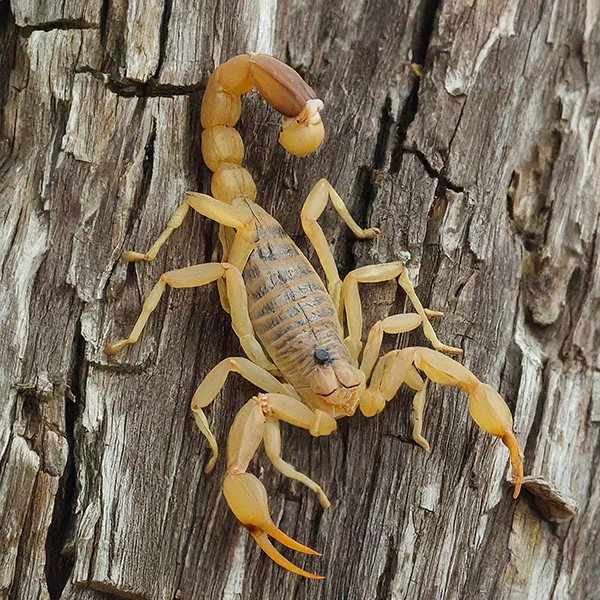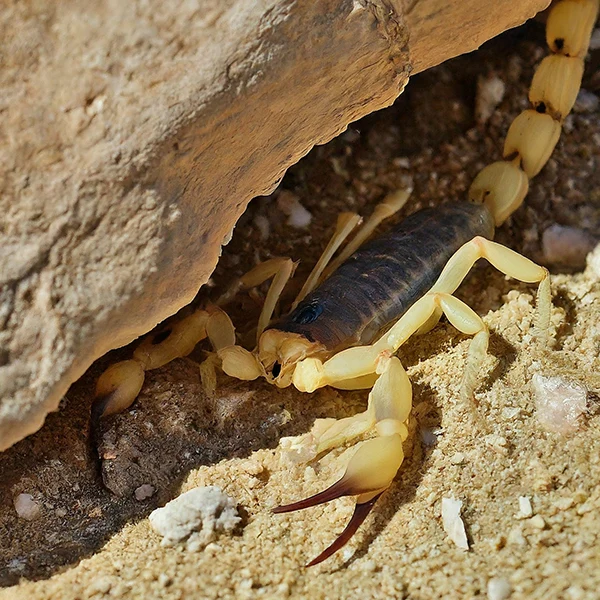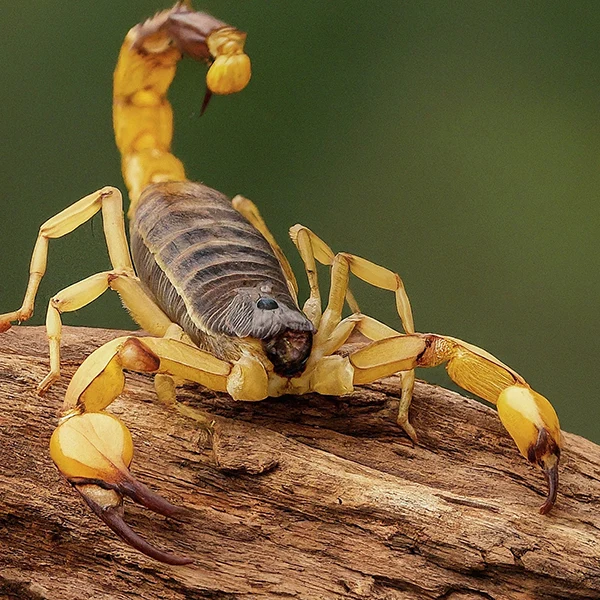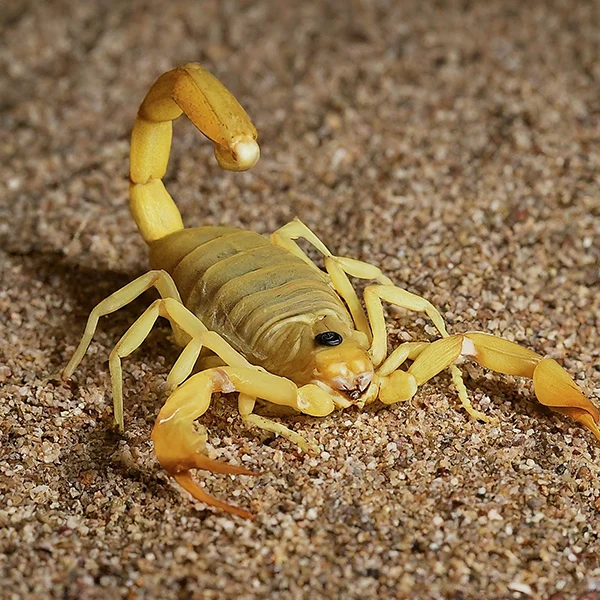Scorpion Control
Queen Creek AZ
Fast Scorpion Treatment - Same Day Service Available
Expert Scorpion Control in Queen Creek AZ
In Arizona, scorpions are most active in the warmer months, usually from April to October. As such, the Queen Creek, Santan Valley, Apache Junction and surrounding areas see a surge in scorpion encounters and risks during these seasons. The high temperatures and favorable conditions of late spring to fall create the perfect environment for many scorpion species.
Bark Scorpions in Arizona Homes
Arizona contains up to 60 species of scorpion, but the one to watch out for is the bark scorpion, commonly found under rocks, tree bark and logs. Without immediate medical attention, their stings can result in muscle paralysis, numbness, and pain. Most scorpions stick to the outdoors, but others, like the bark scorpion, can set up shop in your home, hiding in out-of-the-way crevices.
Do not attempt to remove scorpions yourself. In the interest of safety, always call a trusted local pest control company to handle the situation.
4 Common Types of Scorpions Found in Queen Creek, San Tan Valley, Chandler, Gilbert, Mesa, Florence, and Apache Junction
There are quite a few species of scorpions that call Arizona home. Here are the most common types of scorpions you might see in your home:

1. Bark Scorpion
One of the more common species in AZ, the bark scorpion has a long and slender metasoma (the tail that contains their stinger). Yellow-tan in color, this species prefers rocky desert areas but isn’t above making its way into Santan Valley homes. They like to hide in and around tree bark, hence their name, and happen to be one of the more venomous scorpions in the state.

2. Stripetail Scorpion
Also another common species, the stripetail is yellow in color, with a robust metasoma and striped dorsal area, after which it is named. Measuring under three inches long, females are typically longer than males. They prefer to hide out under rocks but also end up in homes when seeking shelter.

3. Giant Hairy Scorpion
The largest scorpion in the country, this species features dense hair coverage with yellow appendages and dark dorsal areas. It is found in saguaro forests, where it likes to feed on centipedes, spiders, and even other scorpions.

4. Yellow Ground Scorpion
Similar in appearance to the bark scorpion, this species features slender fingers and hands, and is yellow in color with a granular texture. This nocturnal scorpion is often mistaken for its cousin due to the similar characteristics.
Scorpion Prevention Tips
Prevention is the best bet when it comes to scorpions. There are a few things you can do to keep them out of your home or business.
- Eliminate areas of standing water.
- Seal cracks and crevices around doors and windows.
- Inspect closets, cabinets, and other dark places.
- Clear away brush, woodpiles, and debris from the perimeter of your home.
- Stack firewood at least 30 feet away
- Turn off outdoor lights at light. Crickets are attracted to the light, and scorpions feed on those and other insects.
Consider signing up for an affordable regular pest control service. Experienced pest control technicians will visit your property at certain intervals to inspect for signs of incoming pests. They will eliminate any pests including scorpions, spiders, ants, roaches, crickets before their presence turns into an infestation. Contact All Clear Pest Control to learn about our highly popular bi-monthly pest control service.

